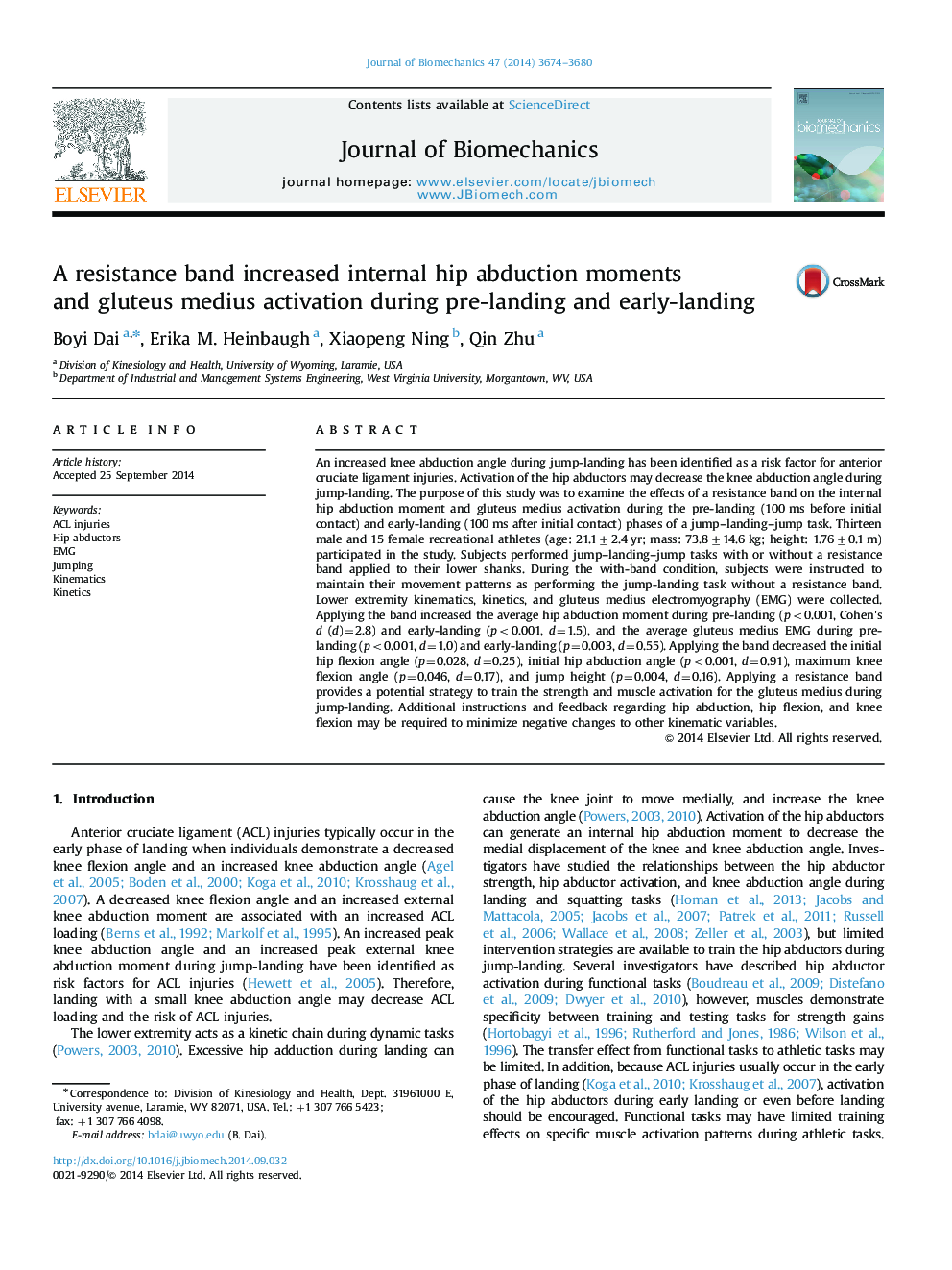| Article ID | Journal | Published Year | Pages | File Type |
|---|---|---|---|---|
| 872032 | Journal of Biomechanics | 2014 | 7 Pages |
An increased knee abduction angle during jump-landing has been identified as a risk factor for anterior cruciate ligament injuries. Activation of the hip abductors may decrease the knee abduction angle during jump-landing. The purpose of this study was to examine the effects of a resistance band on the internal hip abduction moment and gluteus medius activation during the pre-landing (100 ms before initial contact) and early-landing (100 ms after initial contact) phases of a jump–landing–jump task. Thirteen male and 15 female recreational athletes (age: 21.1±2.4 yr; mass: 73.8±14.6 kg; height: 1.76±0.1 m) participated in the study. Subjects performed jump–landing–jump tasks with or without a resistance band applied to their lower shanks. During the with-band condition, subjects were instructed to maintain their movement patterns as performing the jump-landing task without a resistance band. Lower extremity kinematics, kinetics, and gluteus medius electromyography (EMG) were collected. Applying the band increased the average hip abduction moment during pre-landing (p<0.001, Cohen׳s d (d)=2.8) and early-landing (p<0.001, d=1.5), and the average gluteus medius EMG during pre-landing (p<0.001, d=1.0) and early-landing (p=0.003, d=0.55). Applying the band decreased the initial hip flexion angle (p=0.028, d=0.25), initial hip abduction angle (p<0.001, d=0.91), maximum knee flexion angle (p=0.046, d=0.17), and jump height (p=0.004, d=0.16). Applying a resistance band provides a potential strategy to train the strength and muscle activation for the gluteus medius during jump-landing. Additional instructions and feedback regarding hip abduction, hip flexion, and knee flexion may be required to minimize negative changes to other kinematic variables.
